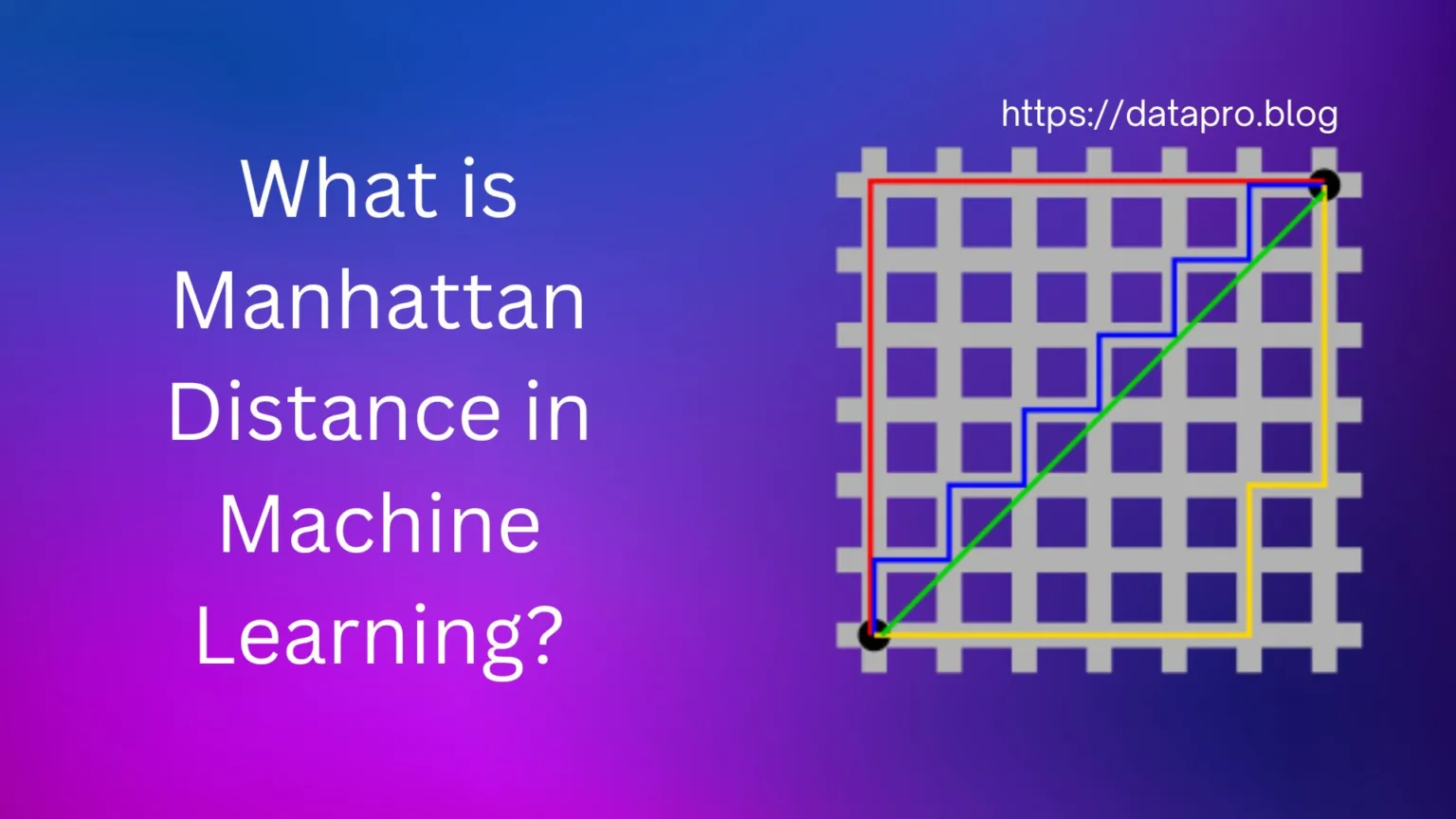Machine learning is a powerful and exciting field that allows us to create intelligent systems that can learn from data and make predictions. However, to achieve the best performance of these systems, we often need to tune some parameters or inputs that affect their behavior. These parameters or inputs are called Hyperparameters in machine learning, and they can include things like the learning rate, the number of hidden layers, the activation function, and so on.
But how do we find the best values for these hyperparameters? One way is to try all possible combinations of them and see which one gives the best result. This is called Grid Search, and it is very simple and straightforward. However, it is also very inefficient and time-consuming, especially when the number of hyperparameters is large or the range of values is wide.
Another way is to use a technique called Random Search, which is the topic of this article. Random search in machine learning is a technique that uses random combinations of hyperparameters to find the best solution for the model. It is based on the idea that not all hyperparameters are equally important, and that some random combinations can perform better than the average or even the best of the grid search.
In this article, we will explain what Random Search is, how it works, why it is useful, and how to implement it in machine learning. We will also compare and contrast random search with grid search and exhaustive search, and address some common misconceptions or myths about random search.
By the end of this article, you will have a clear understanding of random search and its applications in machine learning, and you will be able to use it for your own projects. Let’s get started!
Table of Contents
What is Random Search?
Random search is a technique that uses random combinations of hyperparameters or inputs to find the best solution for the model or function. Hyperparameters are the parameters that are not learned by the model but are set by the user before the training process. Inputs are the variables that are fed into the function to get the output.
Random search works by defining a search space, which is the range or the set of possible values for each hyperparameter or input. Then, it generates random samples from the search space and evaluates them using a predefined metric or objective function. The best sample is the one that maximizes or minimizes the metric or the objective function, depending on the problem.
Random search has some advantages and disadvantages compared to other optimization methods, such as grid search and exhaustive search.
Advantages of Random Search
- Simplicity: Random search is easy to implement and understand, as it does not require any complex algorithm or logic.
- Efficiency: Random search can reduce the computational cost and time, as it does not need to evaluate all possible combinations of the hyperparameters or inputs, but only a subset of them.
- Flexibility: Random search can handle any type of search space, whether it is continuous, discrete, or categorical. It can also deal with complex or nonlinear functions, where the optimal solution is not obvious or predictable.
Disadvantages of Random Search
- High Variance: Random search can have high variability in the results, as it depends on the randomness of the samples. It may miss some good solutions that are not sampled, or it may find some bad solutions that are sampled by chance.
- No Guarantee: Random search does not guarantee finding the global optimum, which is the best possible solution for the problem. It may converge to a local optimum, which is a solution that is better than the neighboring ones, but not the best overall.
- Lack of direction: Without a defined path, random search might miss promising areas of the search space, especially if the optimal solution lies close to a previously evaluated point.
- Computational cost: While generally more efficient than exhaustive search, random search can still be computationally expensive for large problems with many hyperparameters.
Grid search and exhaustive search are two other optimization methods that are often used in machine learning. Grid search is similar to random search, except that it uses a fixed grid of values for each hyperparameter or input, instead of random samples. Exhaustive search is the most thorough method, as it tries all possible combinations of the hyperparameters or inputs.

The table below compares and contrasts random search, grid search, and exhaustive search, based on some criteria:
| Criterion | Random Search | Grid Search | Exhaustive Search |
| Simplicity | High | High | Low |
| Efficiency | High | Medium | Low |
| Flexibility | High | Low | Low |
| Variance | High | Low | Low |
| Approach | Probabilistic sampling | Systematic grid evaluation | Exhaustive exploration of all possible combinations |
| Pros | Foolproof, finds the absolute best solution | Thorough, guaranteed optimal solution, easy to understand | Foolproof, finds absolute best solution |
| Cons | Efficient, flexible, and good for large spaces | Slow for large spaces, inflexible, biased towards initial grid points | Foolproof, finds the absolute best solution |
| Applications | Hyperparameter tuning, function optimization, feature selection | Hyperparameter tuning, function optimization, parameter sensitivity analysis | Design optimization, combinatorial problems (for small search spaces) |
How Does Random Search Work?
Random search is a simple and effective technique for finding the best solution for a model or a function. It works by randomly sampling the hyperparameters or inputs from a predefined search space, and evaluating them using a metric or an objective function. The best sample is the one that maximizes or minimizes the metric or the objective function, depending on the problem.
The steps involved in the Random Search are:
- Define the Search Space: The search space is the range or the set of possible values for each hyperparameter or input. It can be continuous, discrete, or categorical. For example, if we want to tune the learning rate and the number of hidden layers of a neural network, the search space can be defined as:
- Learning rate: [0.001, 0.01, 0.1, 1]
- Number of hidden layers: [1, 2, 3, 4]
- Generate Random Samples: Random samples are the combinations of the hyperparameters or inputs that are randomly selected from the search space. The number of samples can be fixed or variable, depending on the available resources and the desired accuracy. For example, if we want to generate 10 random samples from the search space above, we can get:
- Sample 1: (0.001, 1)
- Sample 2: (0.01, 2)
- Sample 3: (0.1, 3)
- Sample 4: (1, 4)
- Sample 5: (0.01, 1)
- Sample 6: (0.1, 2)
- Sample 7: (1, 3)
- Sample 8: (0.001, 4)
- Sample 9: (0.01, 3)
- Sample 10: (0.1, 4)
- Evaluate the Samples: The samples are evaluated using a metric or an objective function that measures the performance or the quality of the model or the function. The metric or the objective function can be different for different problems, such as accuracy, precision, recall, F1-score, mean squared error, cross-entropy, etc. For example, if we want to evaluate the samples using the mean squared error (MSE) of the neural network on a test set, we can get:
- Sample 1: MSE = 0.25
- Sample 2: MSE = 0.22
- Sample 3: MSE = 0.18
- Sample 4: MSE = 0.27
- Sample 5: MSE = 0.23
- Sample 6: MSE = 0.19
- Sample 7: MSE = 0.26
- Sample 8: MSE = 0.24
- Sample 9: MSE = 0.21
- Sample 10: MSE = 0.20
- Select the Best Sample: The best sample is the one that has the lowest or the highest value of the metric or the objective function, depending on whether we want to minimize or maximize it. For example, if we want to minimize the MSE, the best sample is:
- Sample 3: (0.1, 3), MSE = 0.18
The process of random search can be illustrated with a pseudocode or a flowchart, as shown below:
# Pseudocode for random search
# Define the search space
search_space = {
"learning_rate": [0.001, 0.01, 0.1, 1],
"num_hidden_layers": [1, 2, 3, 4]
}
# Define the number of samples
n_samples = 10
# Define the metric or the objective function
metric = mean_squared_error
# Initialize the best sample and the best score
best_sample = None
best_score = None
# Loop for n_samples times
for i in range(n_samples):
# Generate a random sample from the search space
sample = random_sample(search_space)
# Evaluate the sample using the metric or the objective function
score = metric(sample)
# Compare the score with the best score
if best_score is None or score < best_score: # for minimization
# if best_score is None or score > best_score: # for maximization
# Update the best sample and the best score
best_sample = sample
best_score = score
# Return the best sample and the best score
return best_sample, best_score
Flowchart of Random Search
graph LR
A[Define Search Space] --> B{Generate Random Sample}
B --> C{Evaluate Sample}
C --> D{Is it the best sample?}
D --> |No| B
D --> |Yes| E{Stop}Some tips and best practices for choosing the search space, the number of samples, and the evaluation metric are:
- Choosing a Search Space: Define the hyperparameters and their ranges carefully, considering the problem at hand and avoiding unnecessary exploration of irrelevant areas. For example, if the learning rate is too high or too low, it can cause the model to diverge or converge too slowly.
- Number of Samples: The more samples you evaluate, the higher the chance of finding the best solution. However, consider the computational cost and diminishing returns. Start with a reasonable number and adjust based on the problem and desired accuracy. For example, if the search space has 100 possible combinations, and we want to sample 10% of them, we can choose 10 samples.
- Evaluation Metric: Choose a metric or an objective function that reflects the goal of the problem and the performance or the quality of the model or the function. For example, if the problem is a classification task, and we want to measure how well the model can distinguish between different classes, we can use accuracy, precision, recall, or F1-score.
How to Implement Random Search in Machine Learning?
In this section, we will show you how to implement random search in machine learning using Python. We will use Scikit-learn, a popular machine learning library that provides many tools and algorithms for data analysis and modeling. We will perform random search for a regression task, where we want to predict the median house value based on some features, such as the location, the size, and the condition of the house.
We will use the California Housing dataset, which is a standard benchmark dataset for regression problems. It contains 20,640 samples, each with 8 features and 1 target. The features are:
- longitude: a measure of how far west a house is; a higher value is farther west
- latitude: a measure of how far north a house is; a higher value is farther north
- housing_median_age: median age of a house within a block; a lower number is a newer building
- total_rooms: total number of rooms within a block
- total_bedrooms: total number of bedrooms within a block
- population: total number of people residing within a block
- households: total number of households, a group of people residing within a home unit, for a block
- median_income: median income for households within a block of houses (measured in tens of thousands of US Dollars)
- median_house_value: median house value for households within a block (measured in US Dollars)
The target is:
- median_house_value: median house value for households within a block (measured in US Dollars)
We will use scikit-learn’s built-in function fetch_california_housing to load the dataset. We will also split the dataset into training and test sets, using scikit-learn’s train_test_split function. We will use 80% of the data for training and 20% for testing.
We will use a Ridge Regression model, which is a simple and widely used model for regression problems. The Ridge Regression model has one hyperparameter, which is the alpha or the regularization parameter. It controls the strength of the regularization, which is a technique that prevents overfitting by penalizing large or complex coefficients. A higher alpha means more regularization and a lower alpha means less regularization.
We will use a random search to find the best value for the alpha hyperparameter. We will use scikit-learn’s RandomizedSearchCV function, which performs random search with cross-validation. Cross-validation is a technique that splits the training data into smaller subsets, called folds, and uses some of them for training and some of them for validation. It repeats this process for each fold and averages the results to get a more reliable estimate of the model’s performance. We will use 5-fold cross-validation, which means that we will split the training data into 5 folds, use 4 of them for training and 1 of them for validation, and repeat this for each fold.
We will define the search space for the alpha hyperparameter as a logarithmic scale from 10^-4 to 10^4, which covers a wide range of values. We will generate 20 random samples from this search space, and evaluate them using the mean squared error (MSE) as the metric. We will choose the sample that has the lowest MSE as the best sample.
The code, the output, and the analysis of the results are shown below:
# Import the necessary libraries
import numpy as np
import pandas as pd
from sklearn.linear_model import Ridge
from sklearn.model_selection import RandomizedSearchCV
from sklearn.model_selection import train_test_split
from sklearn.datasets import fetch_california_housing
# Load the dataset
data = fetch_california_housing()
# Define the features and the target
X = data.data
y = data.target
# Split the dataset into training and test sets
X_train, X_test, y_train, y_test = train_test_split(X, y, test_size=0.2, random_state=42)
# Define the hyperparameters to tune
params = {
"alpha": np.logspace(-4, 4, 20)
}
# Create the model
model = Ridge()
# Create the random search object
random_search = RandomizedSearchCV(model, params, n_iter=20, cv=5, scoring="neg_mean_squared_error")
# Fit the random search object to the training data
random_search.fit(X_train, y_train)
# Print the best hyperparameters and the best score
print(random_search.best_params_)
print(random_search.best_score_)Output
{'alpha': 11.288378916846883}
-0.5192554804853164The output shows that the best value for the alpha hyperparameter is 11.288378916846883, and the best score (the negative MSE) is -0.5192554804853164. This means that the MSE is 0.5192554804853164, which is the average squared error between the predicted and the actual values of the target. A lower MSE means a better fit of the model to the data.
We can also evaluate the model on the test set, using scikit-learn’s score function, which returns the coefficient of determination (R^2) of the model. The R^2 is a measure of how well the model explains the variance of the target. It ranges from 0 to 1, where 0 means no explanation and 1 means perfect explanation. A higher R^2 means a better performance of the model.
# Evaluate the model on the test set
score = random_search.score(X_test, y_test)
# Print the score
print(score)Output
-0.5549356456040702The output shows that the score (the negative R^2) is -0.5549356456040702. This means that the R^2 is 0.5549356456040702, which is the proportion of the variance of the target that is explained by the model. This is a moderate value, which indicates that the model has some predictive power, but it is not very accurate.
In this section, we have demonstrated how to implement random search in machine learning using Python and scikit-learn. We have performed a random search for a regression task, using a ridge regression model and the California Housing dataset. We have shown the code, the output, and the analysis of the results. We have learned that random search is a simple and powerful technique that can find the best solution for a model or a function with less computational cost and time.
Why is Random Search useful?
In the realm of machine learning, where efficiency and accuracy are paramount, random search emerges as a powerful contender. Unlike its deterministic counterparts, it embraces randomness, not as a chaotic force, but as a strategic tool for navigating the labyrinthine landscapes of optimization problems. Here’s why random search deserves a standing ovation:
1. Taming the Computational Beast:
Imagine training a complex model with hundreds of hyperparameters, each requiring meticulous evaluation under various configurations. Grid search, the traditional method, would embark on an exhaustive exploration, consuming immense computational resources and time. Random search, on the other hand, takes a more streamlined approach. By sampling random combinations of hyperparameters, it significantly reduces the number of evaluations needed, making it ideal for large datasets and complex models.
2. Escaping the Local Optima Trap:
Optimization landscapes are often riddled with treacherous valleys, known as local optima. Deterministic methods like grid search can get stuck in these valleys, mistaking them for the global peak. Random search, with its probabilistic leaps, has a higher chance of escaping these traps and venturing into unexplored territories, potentially uncovering the true peak of performance.
3. Exploring the Hidden Corners:
Think of the search space as a vast, uncharted island. Grid search meticulously combs every beach but might miss hidden coves brimming with treasures. Random search, with its daring leaps, can hop across mountains and delve into hidden valleys, uncovering promising areas that might be overlooked by traditional methods. This allows for a more comprehensive exploration of the search space, potentially leading to solutions that grid search might never find.
Empirical Evidence:
The effectiveness of random search isn’t just theoretical speculation; it’s backed by concrete evidence. Studies like the one on hyperparameter optimization for support vector machines and the one on neural network architecture search demonstrate that random search can achieve comparable or even better performance than grid search, often with significantly lower computational cost.
Debunking the Myths:
Despite its proven effectiveness, random search is often shrouded in misconceptions. Let’s dispel some of the most common myths:
- Myth 1: Randomness is a recipe for disaster: While random, the sampling process is guided by probability distributions, ensuring a diverse and informative exploration of the search space.
- Myth 2: Efficiency takes a hit: Compared to exhaustive search, random search is significantly faster, especially for large problems.
- Myth 3: Chance reigns supreme: While random, the selection of the best solution is based on a chosen metric, ensuring the chosen solution offers the desired outcome.
Random search is not a silver bullet, but a powerful tool in the optimization arsenal. By understanding its strengths and limitations, you can leverage its potential to unlock the peak performance of your machine learning models, all while saving precious computational resources and avoiding the pitfalls of traditional methods. So, the next time you face an optimization challenge, consider giving random search a chance. You might be surprised by the hidden treasures it unearths.
Remember, optimization is an ongoing journey, and random search is a valuable companion on that path. Embrace its randomness, understand its strengths, and watch it guide you toward solutions that shine brighter than ever before.
Conclusion
We have reached the end of this article on random search in machine learning. Let’s recap the main points and the main goal of this article.
The main goal of this article was to explain what random search is, how it works, why it is useful, and how to implement it in machine learning. We have learned that:
- Random search is a technique that uses random combinations of hyperparameters or inputs to find the best solution for the model or the function.
- Random search works by defining a search space, generating random samples, evaluating the samples, and selecting the best sample.
- Random search has some benefits over other optimization methods, such as reducing the computational cost, avoiding local optima, and exploring the search space more effectively.
- Random search can be implemented in machine learning using Python and scikit-learn, and we have demonstrated how to do it for a regression task using a linear regression model and the California Housing dataset.
- Random search also faces some common misconceptions or myths, such as being too random, too inefficient, or too dependent on chance, and we have addressed them.
We hope that this article has given you a clear understanding of random search and its applications in machine learning and that you will be able to use it for your own projects.
Thank you for reading this article. We appreciate your attention and interest. If you have any feedback or questions, please feel free to share them with us. We would love to hear from you. 😊
Frequently Asked Questions
What is Random Search in Machine Learning?
Random search is a technique that uses random combinations of hyperparameters or inputs to find the best solution for the model or the function.
What are the advantages of Random Search over Grid Search?
Random search has some advantages over grid search, such as reducing the computational cost, avoiding local optima, and exploring the search space more effectively.
How to implement random search in machine learning using Python?
Random search can be implemented in machine learning using Python and scikit-learn, by using the RandomizedSearchCV function, which performs random search with cross-validation
What are some common misconceptions or myths about random search?
Some common misconceptions or myths about random search are that it is too random, too inefficient, or too dependent on chance and that it does not have any logic or strategy behind it.




